Top Lists
Top 20 Landmarks In Nigeria
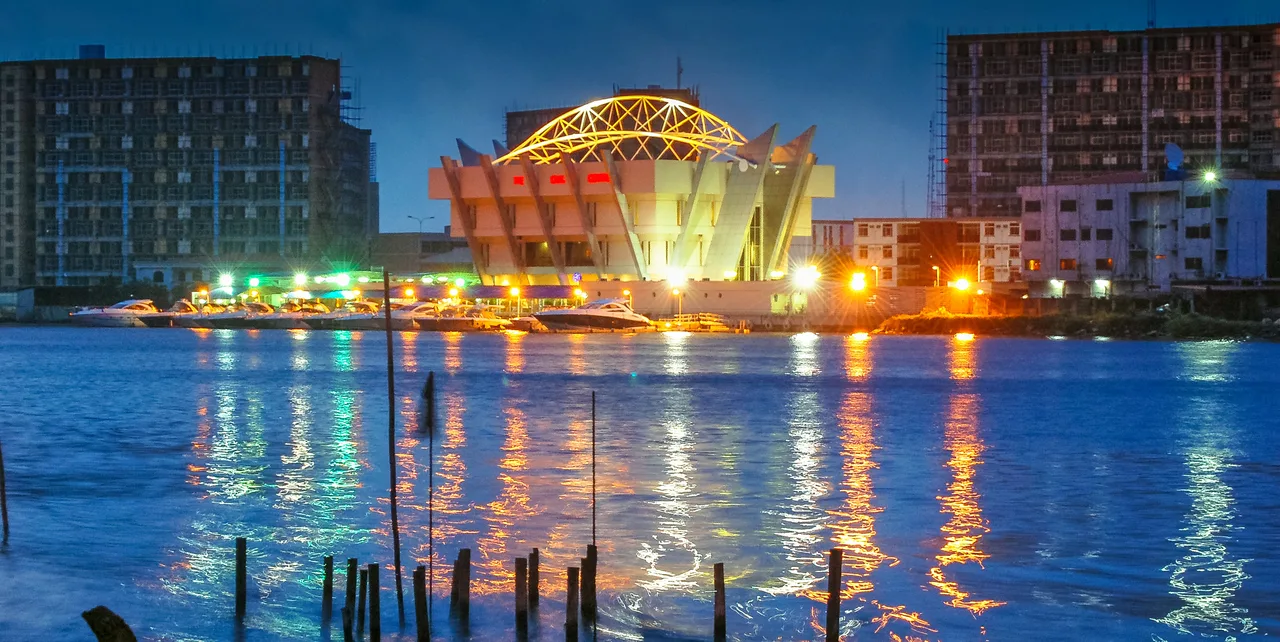
Nigeria is a vibrant and diverse country located in West Africa. It is famous for its captivating cultural heritage and breathtaking landmarks that never fail to astonish visitors. From historical sites to breathtaking natural wonders, Nigeria has a wide range of attractions to offer.
These landmarks in Nigeria provide a glimpse into the country’s captivating history, mesmerizing natural beauty, and diverse cultural traditions. If you enjoy history, nature, or art, these landmarks in Nigeria will definitely pique your curiosity.
In this article, RNN will showcase the top 20 landmarks you should add to your travel bucket list.
1. Owu Falls – Kwara State
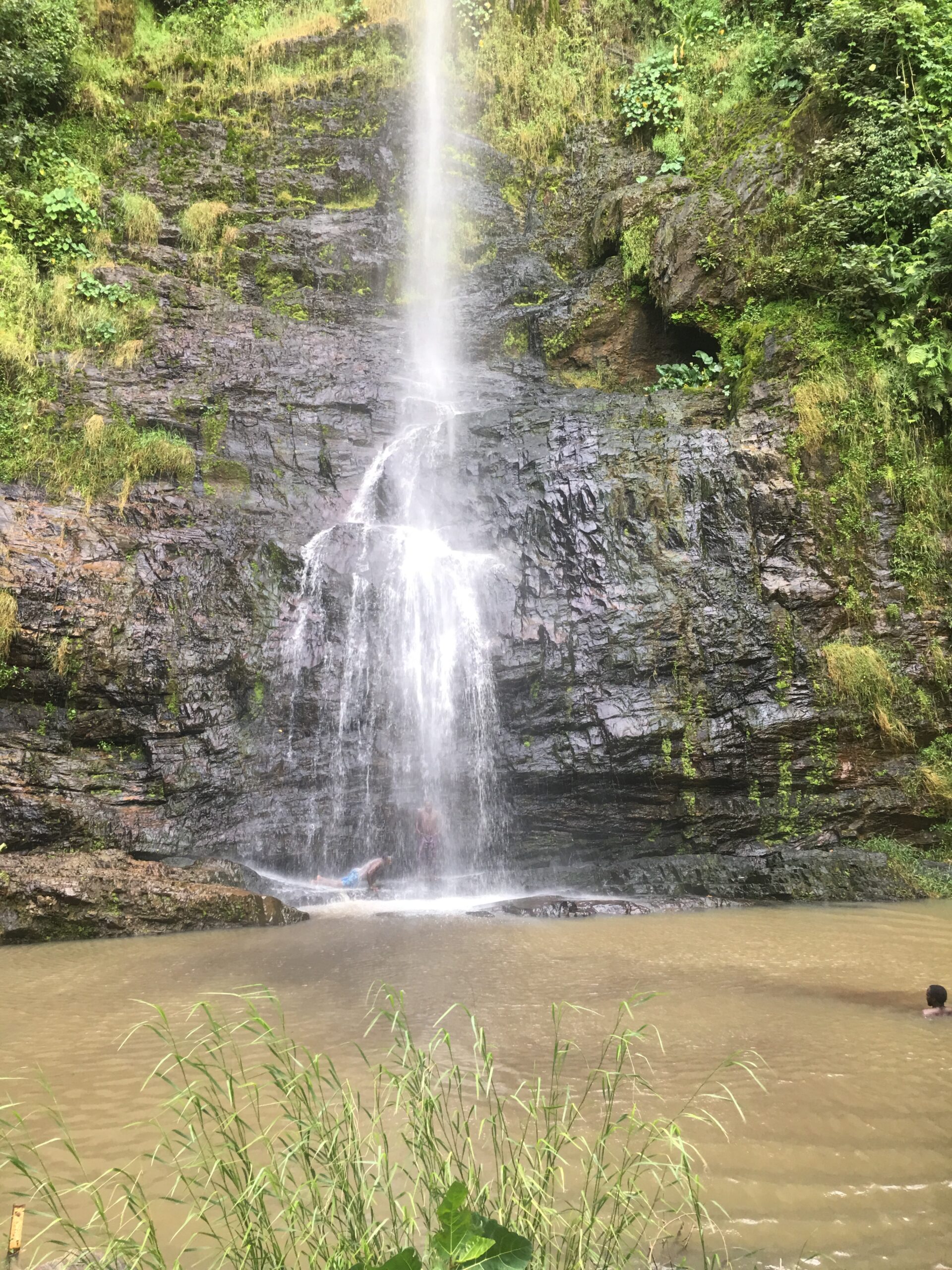
Owu Waterfall, located in Owa Kajola, Ifelodun Local Government Area of Kwara State, Nigeria, is the highest waterfall in West Africa. It measures 120 meters above the water level and cascades 330 feet down an escarpment into a pool of ice-cold water.
Due to its gentle cascading and great photo opportunities, Owu Falls attracts numerous visitors annually. It is best to visit during the rainy season to witness the splendor and majesty of the falls. Surrounded by dense tropical rainforests, the area offers abundant birdwatching opportunities and the chance to spot monkeys and reptiles.
Often referred to as a wonder in the wilderness, Owu Waterfall provides a refreshing experience and is a true delight for nature enthusiasts.
2. Olumo Rock – Ogun State
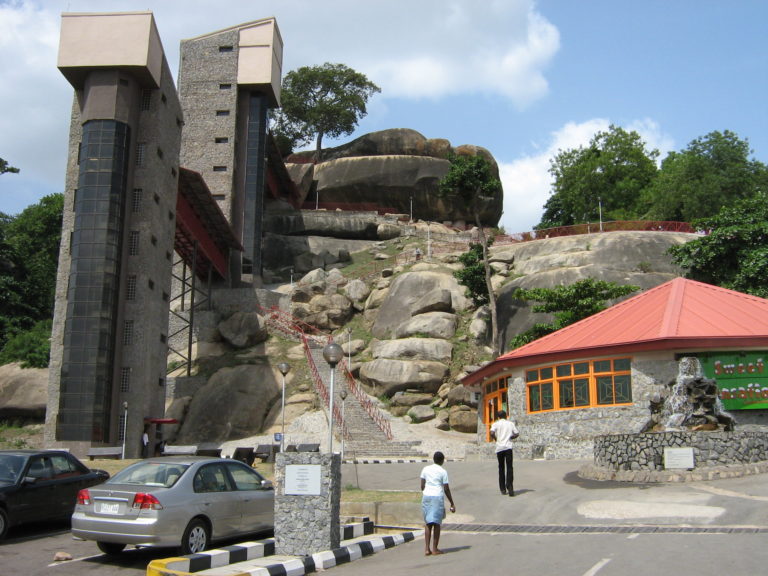
Olumo Rock is a mountain situated in southwest Nigeria, specifically in Abeokuta, Ogun State. In the past, it served as a natural fortress during conflicts during the 19th century. Within the Yoruba religion, it holds significance as an orisha, a revered patron spirit. The name “Olumo” originates from the combination of two words: “olu,” meaning god or deity, and “mo,” meaning molded.
Perched above Abeokuta, the igneous mountain rises 450 feet from ground level, making it one of Nigeria’s most renowned landmarks with deep historical importance. Ascending to the mountain’s summit provides an exhilarating experience and offers breathtaking views of the city, truly a sight to behold.
3. Aso Rock – Abuja
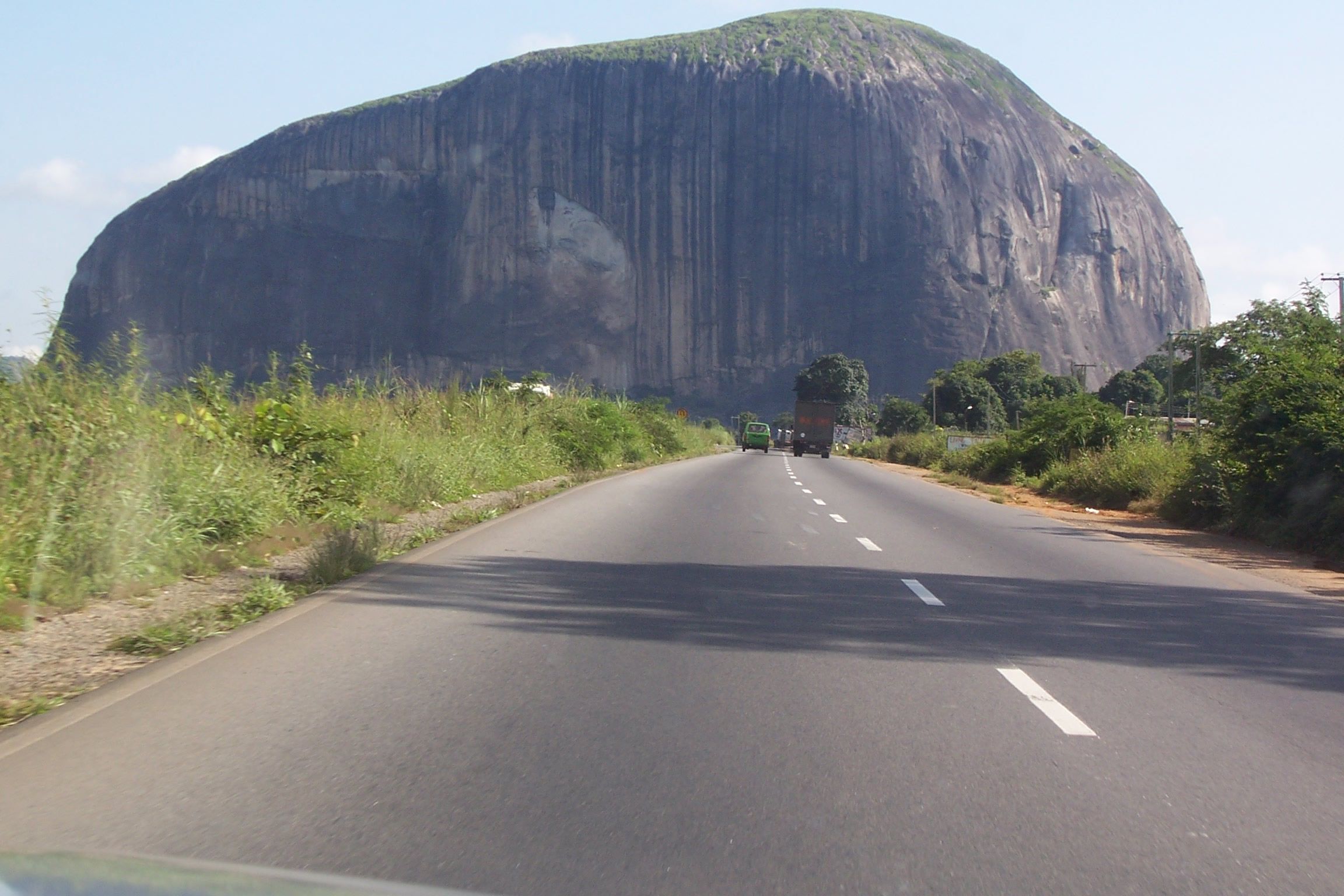
Aso Rock is a large piece of granite located near the outskirts of Abuja, the capital of Nigeria. It stands out at a height of 400 meters (1,300 feet) and reaches a peak of 936 meters (3,071 feet) above sea level.
It is easy to recognize because it is surrounded by significant structures like the Nigerian Presidential Complex, Nigerian National Assembly, and the Nigerian Supreme Court.
The city mostly stretches towards the south of the rock. Aso Rock’s distinct landscape, coupled with its lush vegetation, makes it a renowned symbol of Nigeria.
4. Zuma Rock – Abuja
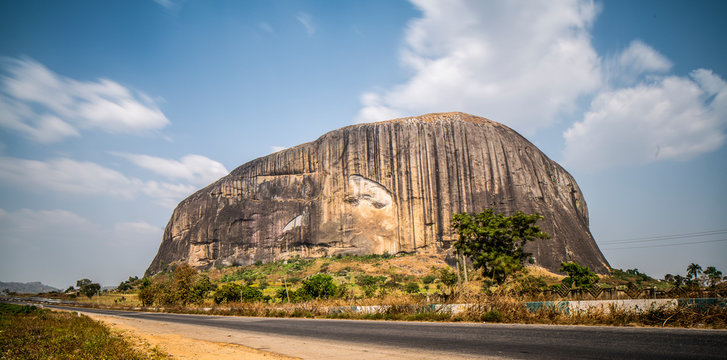
Zuma Rock is a massive rock formation consisting of gabbro and granodiorite. It can be found in Niger State, Nigeria, towards the west of the capital city, Abuja. Zuma Rock stands about 300 meters (980 ft) taller than its surroundings.
The area surrounding Zuma Rock offers beautiful views of Niger State’s landscape and wildlife. Visitors have the opportunity to explore caves on both sides of the mountain or capture memorable pictures with local vendors who specialize in providing photo opportunities on top of Zuma Rock!
5. Abuja National Mosque
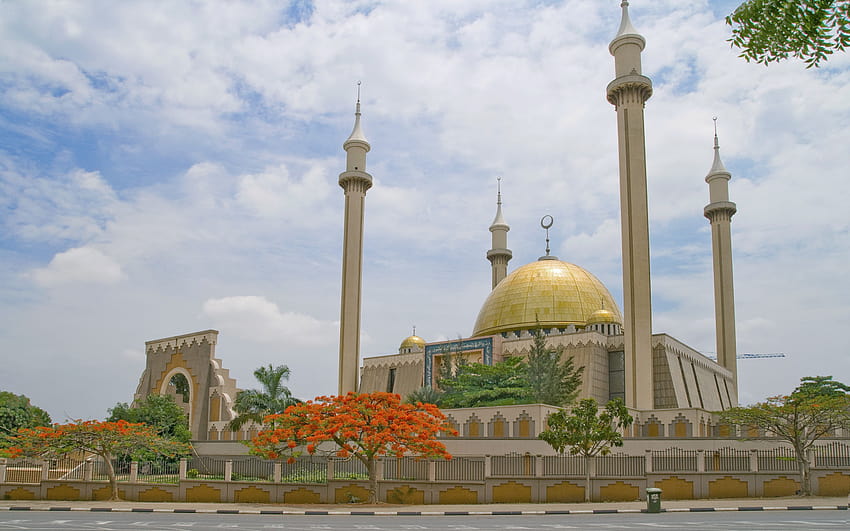
The Abuja National Mosque, also called the Nigerian National Mosque, is Nigeria’s national mosque. It was constructed in 1984 and welcomes non-Muslim visitors, except during congregational prayers.
It is a towering structure, comprising more than 5 stories, and ranks among Africa’s largest mosques.
You can take a guided tour of the mosque or admire its magnificent design from a distance. It has become an iconic symbol of Nigeria’s capital city.
6. Moshood Abiola National Stadium – Abuja

The Moshood Abiola National Stadium, formerly known as the National Stadium, Abuja, is a sports stadium located in Abuja, Nigeria. It serves as the home stadium for the Nigerian national football team and also hosts a range of social, cultural, and religious events.
The stadium is among the top 5000 most expensive stadiums ever constructed worldwide.
It features a lightweight roof and consists of two tiers. The lower tier can accommodate 32,000 seats, while the upper tier can hold 28,000 seats.
7. National Stadium – Lagos
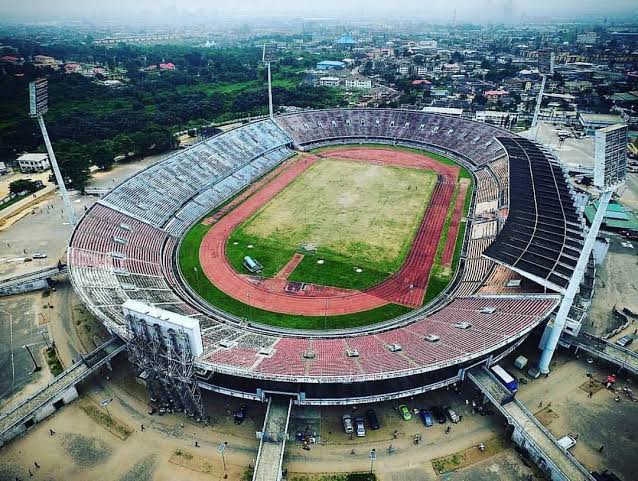
The Lagos National Stadium in Surulere, Lagos State, Nigeria is a versatile sports facility. It consists of an Olympic-size swimming arena and a multipurpose arena that hosts various sports like athletics, rugby, basketball, volleyball, table tennis, wrestling, and boxing matches.
The stadium has proudly hosted notable events including the final matches of the 1980 African Cup of Nations and the 2000 African Cup of Nations, as well as FIFA World Cup qualifying matches. Moreover, it served as the main stadium for the 1973 All-Africa Games.
Explore the remarkable grounds of this historic venue, which has been hosting international football matches since 1972. Take a moment to admire its iconic architecture and enjoy a leisurely stroll around its surroundings to appreciate the picturesque views of neighboring areas.
8. Tafawa Balewa Square – Lagos

The Tafawa Balewa Square, also known as TBS, is a large ceremonial ground in Lagos Island, Lagos. It covers an area of 14.5 hectares (35.8 acres). Originally called “Race Course,” it has been a significant location for Nigeria’s Independence Day celebration since 1960 when the country gained freedom from colonial rule.
Situated in the center of Lagos City, the Tafawa Balewa Square is surrounded by notable buildings and sculptures. It serves as a venue for various public events and festivities, making it a lively and bustling spot in the heart of the city. This historic landmark in Nigeria provides an excellent opportunity to immerse oneself in Nigerian culture and history.
9. Lekki Conservation Centre – Lagos
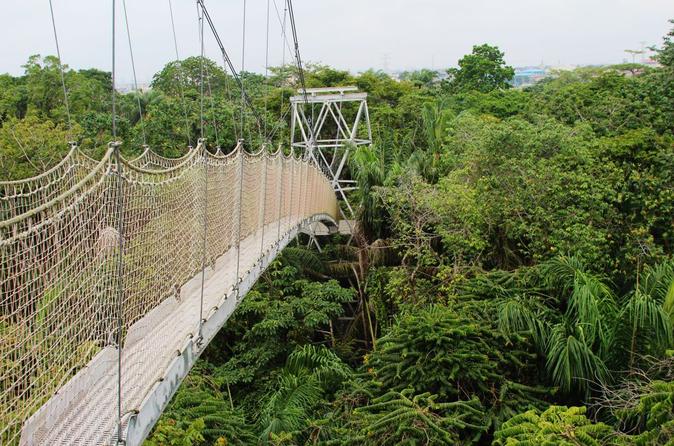
Lekki Conservation Centre (LCC) is a natural resource conservation area located in Lekki, Lagos State, Nigeria. It covers a land area of 78 hectares (190 acres) and is part of the PARCC West Africa project. The reserve is situated on the Lekki Peninsula, near the Lekki Lagoon and Lagos Lagoon.
Its purpose is to protect the wetlands of the Lekki peninsula, which include swamp and savannah habitats. As you approach the reserve, you’ll see a beautiful boulevard lined with coconut trees leading to a well-organized car park and Visitors’ Park. The center is home to a diverse range of plant and animal species.
10. Gurara Falls – Niger
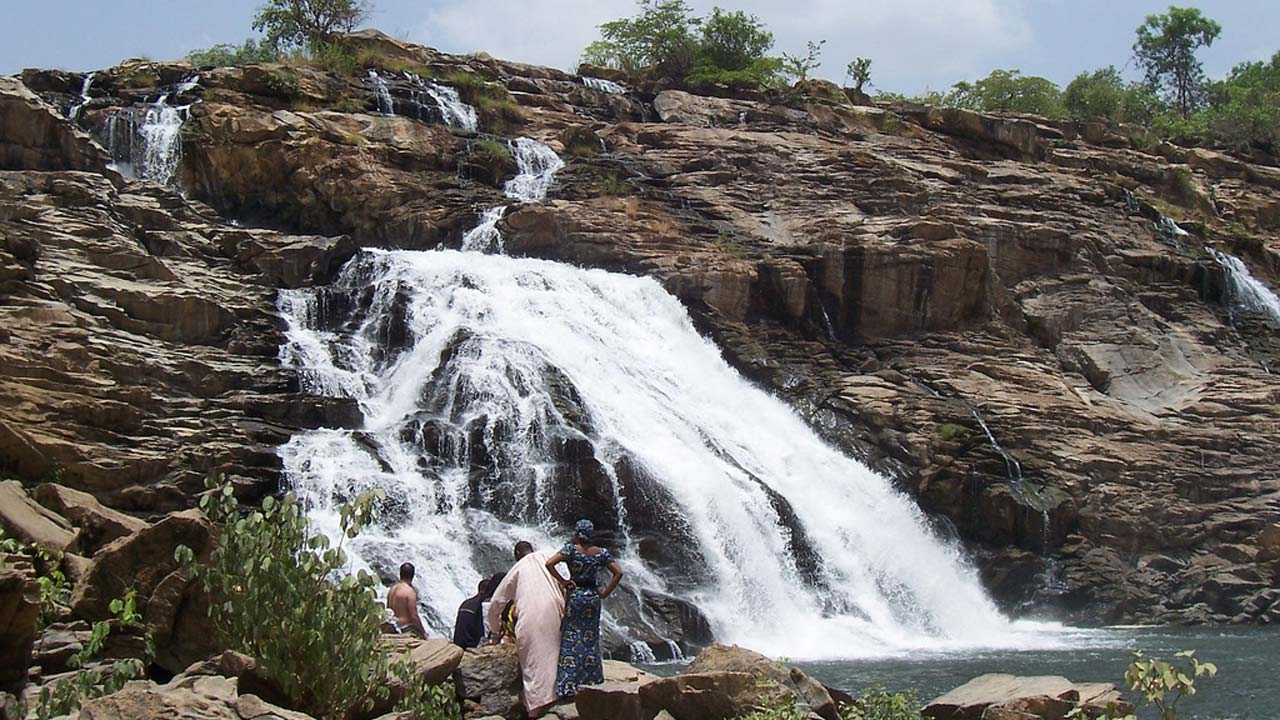
The Gurara Waterfalls can be found in Gurara, a local government area in Niger State, Nigeria, and is one of landmarks in Nigeria. It stands at around 30 meters tall and is situated on the Gurara River along the Suleja-Minna Road.
Gurara Falls is a popular natural attraction in Nigeria. It is particularly stunning to visit during the rainy months from July to September when the falls can reach a height of 30 meters. As a result, it is one of the most visited tourist spots in Nigeria.
During the dry season, which lasts from December to March, the abundance of greenery and flowing water make it an excellent destination for an excursion.
11. Erin Ijesha Waterfalls – Osun State
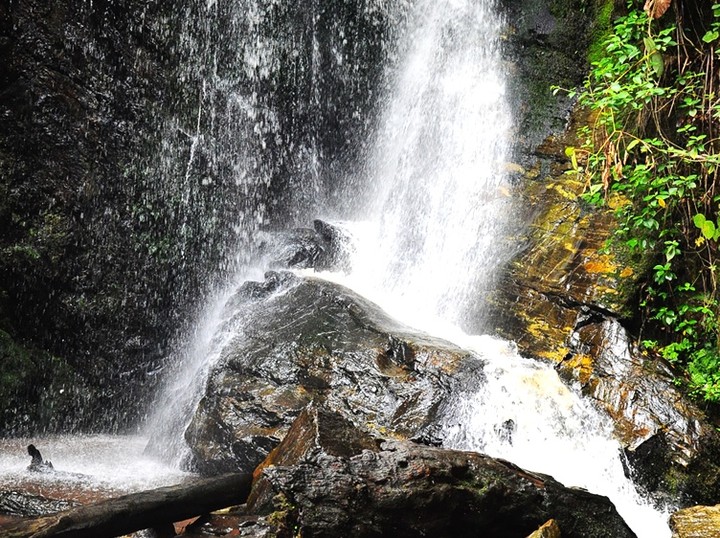
Erin-Ijesha Waterfalls, also called Olumirin Waterfalls, is a well-liked tourist spot located in Erin-Ijesha, in the Oriade local government area of Osun State, Nigeria. The waterfall attracts visitors with its captivating beauty and scenic surroundings.
One of the highlights of visiting Erin-Ijesha Waterfalls is the opportunity to swim in the refreshing pools formed by the cascading water. These natural pools offer a rejuvenating experience, perfect for cooling off after the hike. However, it’s important to exercise caution and follow safety guidelines while swimming.
12. Osun Osogbo Sacred Grove
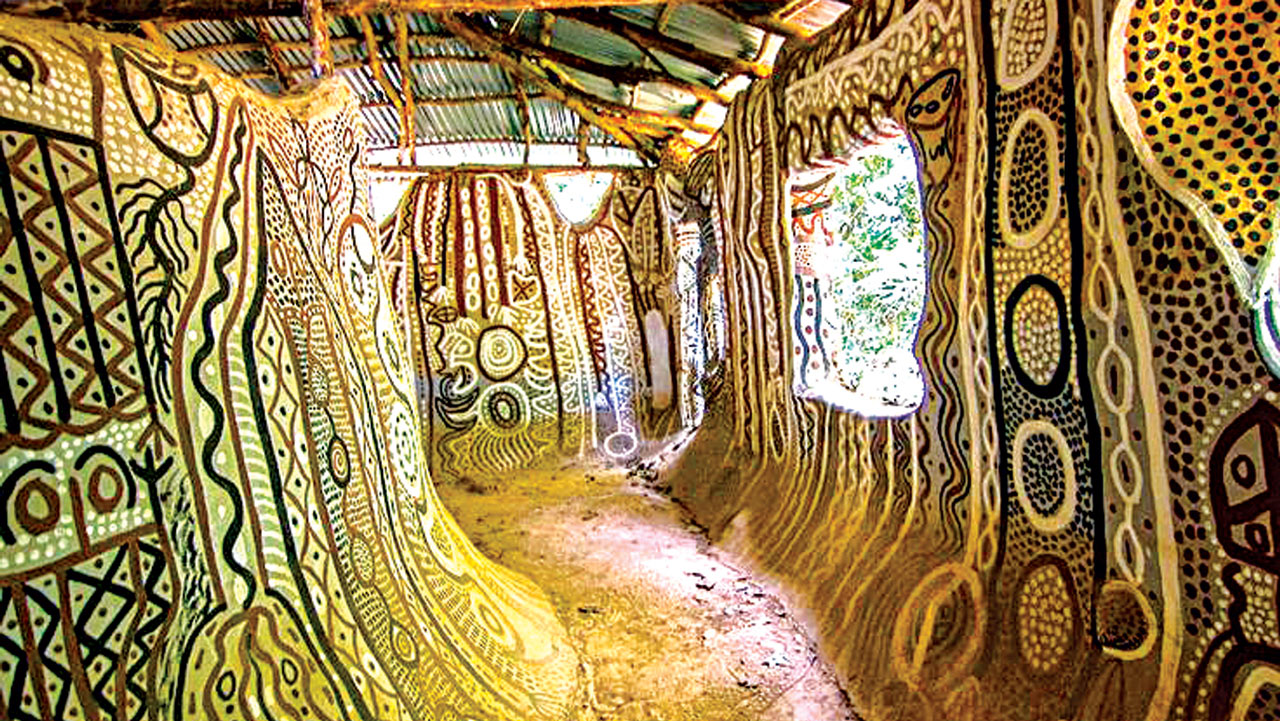
Osun-Osogbo is a sacred grove located by the Osun River near the city of Osogbo in Osun State, Nigeria.
The Osun-Osogbo Grove is several centuries old and is one of the few remaining sacred forests that used to surround Yoruba cities before urbanization.
Every August, since that year, the Osun-Osogbo Festival takes place at the Grove. This festival attracts numerous worshippers, spectators, and tourists from around the world.
13. Ogunike Caves – Anambra

The Ogbunike Caves are situated in Ogbunike, Anambra State, southeastern Nigeria. These caves have been used by local people for many centuries and hold great spiritual importance. Every year, the “Ime Ogba” celebration takes place to commemorate the discovery of the caves. To reach the caves, visitors need to walk down a long pathway consisting of around 317 steps built by the Anambra State Government in the mid-1990s.
It is customary for visitors to remove their shoes before entering the caves, and women who are menstruating are not allowed to enter. The main cave is a large structure with an open chamber at the entrance measuring approximately 5 meters high, 10 meters wide, and 30 meters long. Inside the main chamber, there are ten tunnels leading in different directions. These tunnels contain various interconnected chambers and tunnels of different lengths. Additionally, the caves are home to a significant population of bats, ranging in size.
14. Benin Moat
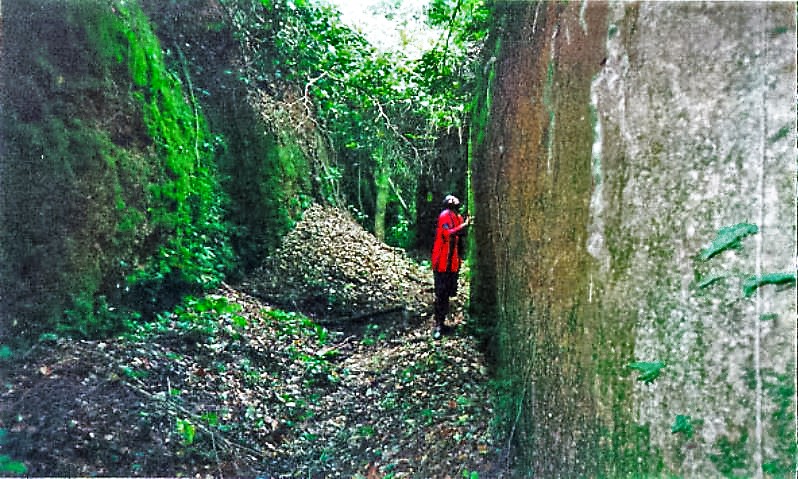
The Benin Moat is the largest earthwork in the world. It was constructed without the use of labor-saving equipment, making it a remarkable achievement. Spanning 32,000 km, it served as a defensive wall for the city of Benin during wars. Today, it remains a significant destination in Nigeria and is open daily to visitors, with no admission fee. Its construction took place from the year 800 to the 15th century.
15. Yankari Game Reserve – Bauchi
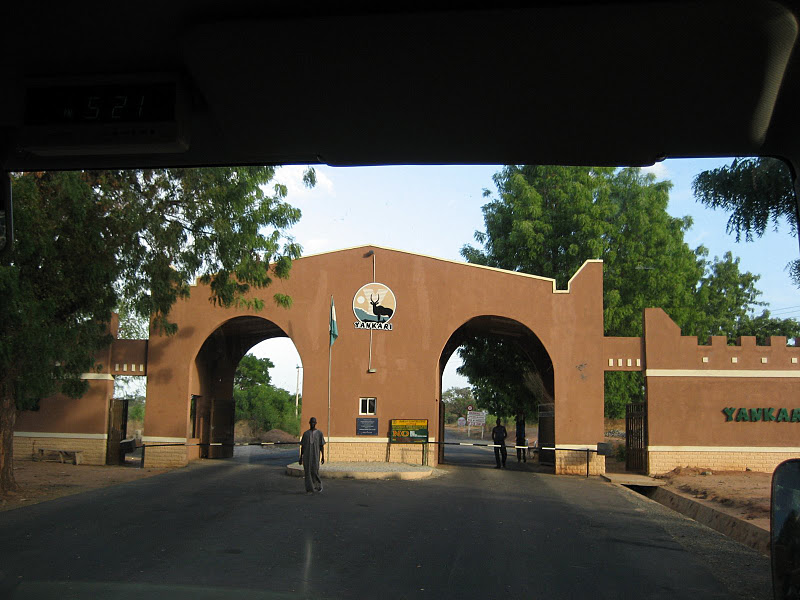
Yankari Game Reserve is one of landmarks in Nigeria.It is a big wildlife park located in Bauchi State, Nigeria. It used to be a National Park. The park covers an area of about 2,244 square kilometers (866 square miles) and has natural warm water springs. It is home to a variety of plants and animals.
The park is a refuge for more than 50 mammal species, including elephants, baboons, monkeys, antelopes, lions, buffalos, and hippos. Unfortunately, the lion population is close to extinction, with only two remaining in the park as of 2011.
Yankari Game Reserve is also home to over 350 bird species. Among them are resident birds, migratory birds from Europe and other parts of Africa, and local migratory birds within Nigeria. Some notable bird species in the park are the saddle-billed stork, Helmeted guineafowl, African grey hornbill, and cattle egret.
16. National Theater – Lagos
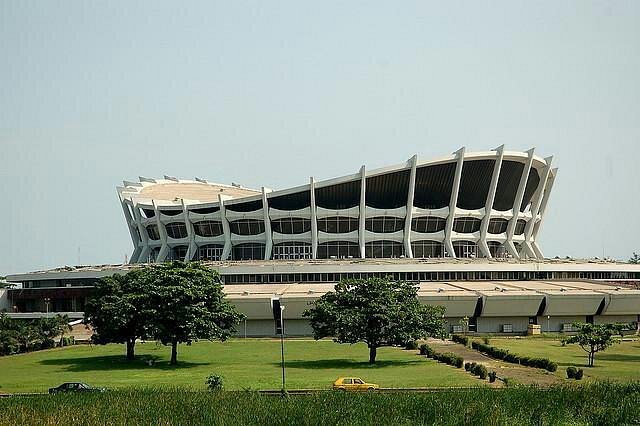
The National Theatre in Nigeria is the main place for performing arts in the country. It is situated in Iganmu, Surulere, Lagos, and was finished in 1976 for the Festival of Arts and Culture (FESTAC) in 1977. This is one of landmarks in Nigeria
The National Arts Theater serves as Nigeria’s main venue for cultural and artistic events. It has a distinctive design resembling a military base, as it was constructed during the military regime of Olusegun Obasanjo.
17. Walls Of Benin
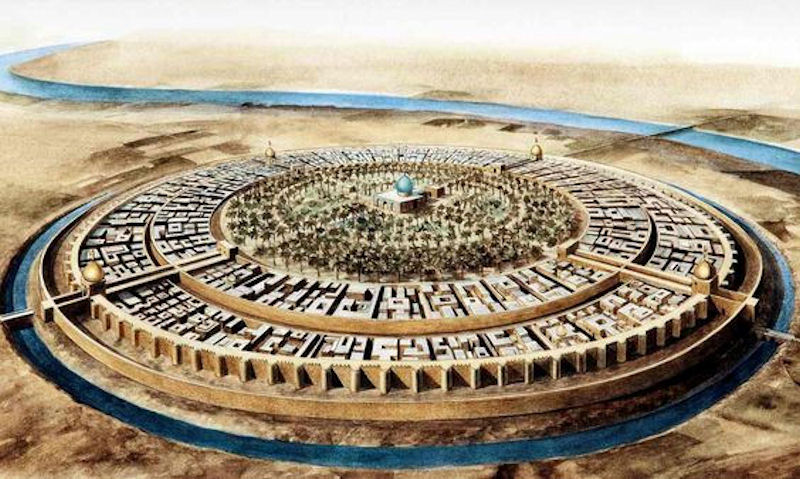
The Walls of Benin are earthworks consisting of banks and ditches called Iya. They are found in the region around present-day Benin City, the capital of Edo, Nigeria. The walls include 15 km (9.3 mi) of city walls and an estimated 16,000 km (9,900 mi) of rural walls, which were likely used for dividing lands and properties.
There are different estimates regarding when the walls were initially built, ranging from the first millennium CE to the mid-fifteenth century CE. According to Connah, oral tradition and accounts from travelers suggest a construction period between 1450 and 1500 CE. It has been calculated that a labor force of 5,000 men working 10-hour days could have completed the walls in 97 days. Alternatively, it would have taken 2,421 men to work for 200 days.
18. Idanre Hill – Ondo State
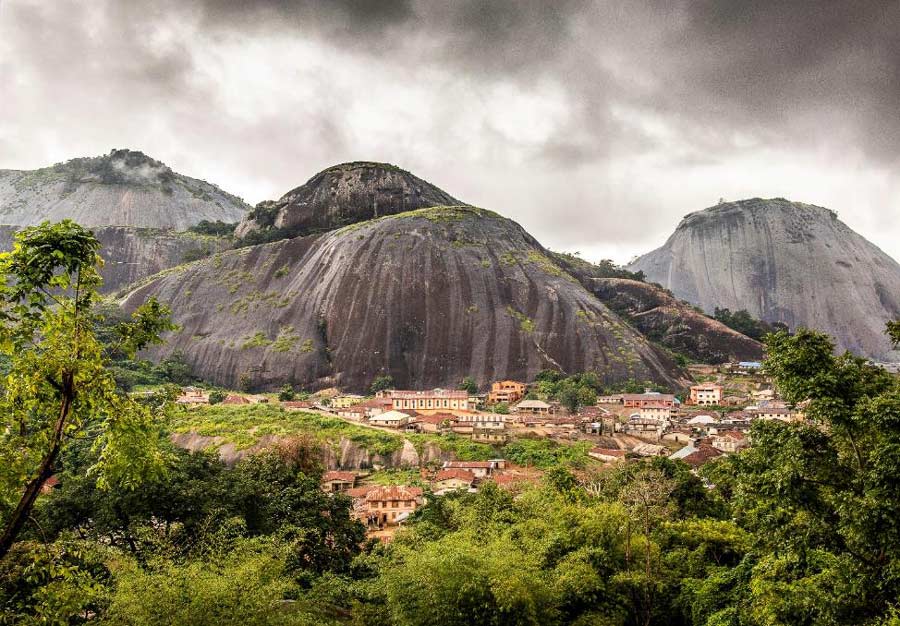
Idanre Hill, also called Oke Idanre, is found in the town of Idanre, located in Nigeria’s Ondo State. The hill rests on a Precambrian igneous batholith, dating back around 500 million years. It features several important cracks that have shaped deep valleys in the rocks. Idanre Hill is famous for its nine ancient wonders and beliefs, all situated on the hill.
19. Ibeno Beach – Akwa Ibom
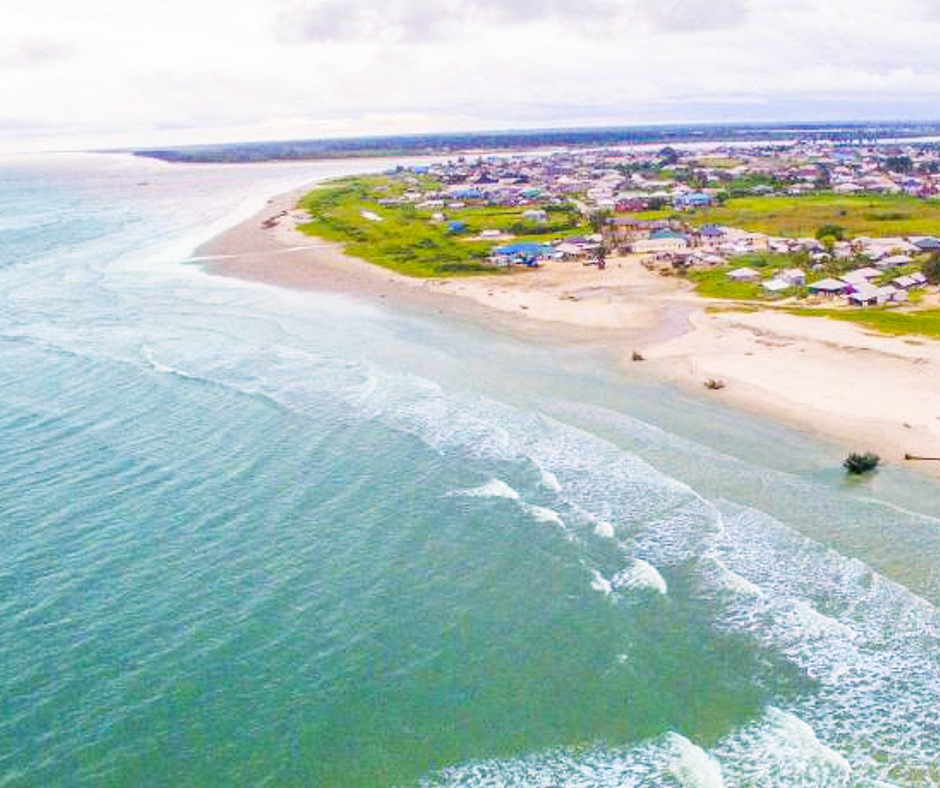
Ibeno Beach is located along the Atlantic Ocean in Ibeno, and it holds the title of being the longest sand beach in West Africa. The major estuary in Ibeno Beach is the Qua Iboe River estuary. This beautiful beach extends approximately 30 kilometers from Ibeno to James Town along the Atlantic coastline of Akwa Ibom State in Nigeria.
While Ibeno Beach is a beautiful destination, it’s important to prioritize safety during your visit. Follow the guidelines provided by the local authorities, swim only in designated areas, and be mindful of any warning signs or flags indicating potentially hazardous conditions.
20. Kajuru Castle – Kaduna State 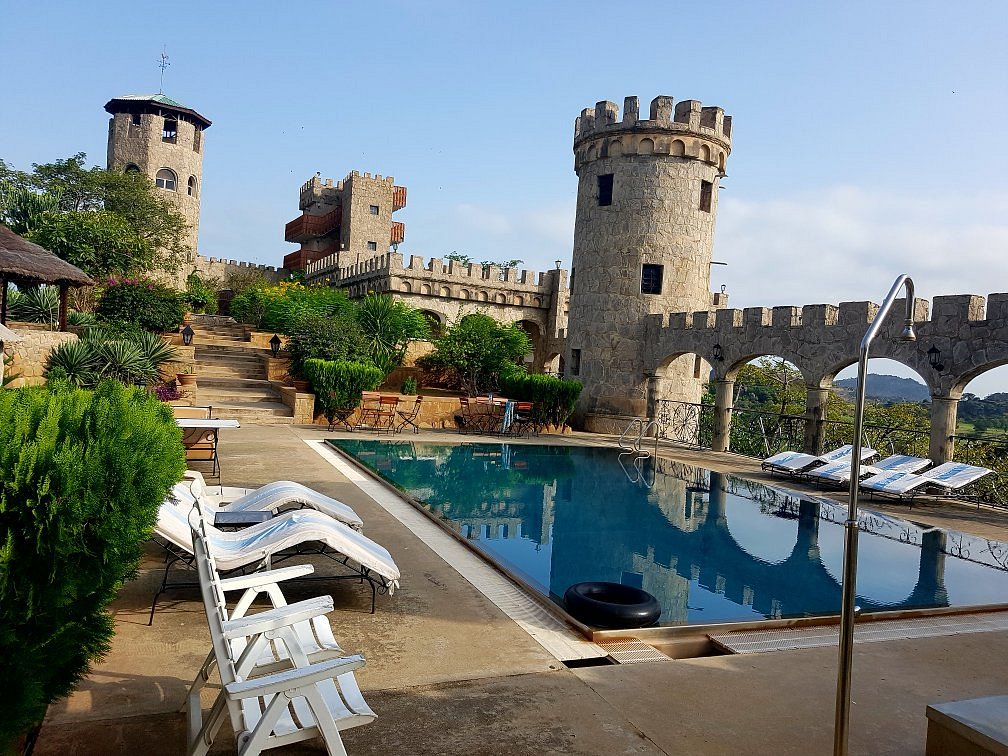
Kajuru Castle is a luxurious villa situated in southern Kaduna State, Nigeria. It was constructed by a German expatriate between 1981 and 1989 while living in Kaduna. The castle resembles the Bavarian Castle from the 19th century, with a grand Romanesque revival style. Inside, you’ll find a spacious hall, dungeons, towers with crenelated walls, a knight’s hall, the landlord’s residence, and multiple rooms spread across three floors.
While Kajuru Castle offers a memorable experience, it’s important to be mindful of safety precautions. Visitors are advised to follow guidelines, stay within designated areas, and respect the castle’s rules to ensure a pleasant and secure visit.
